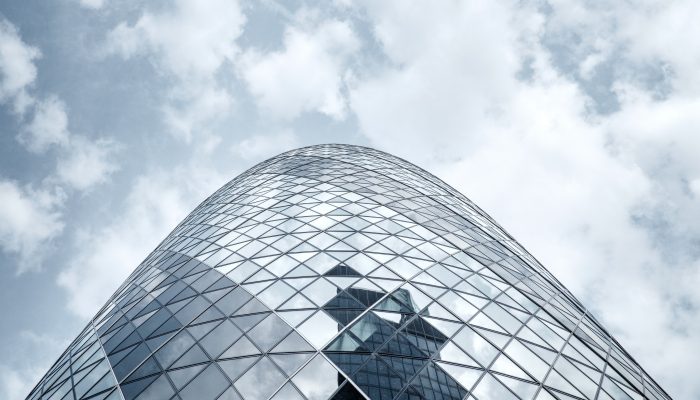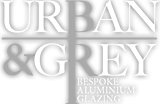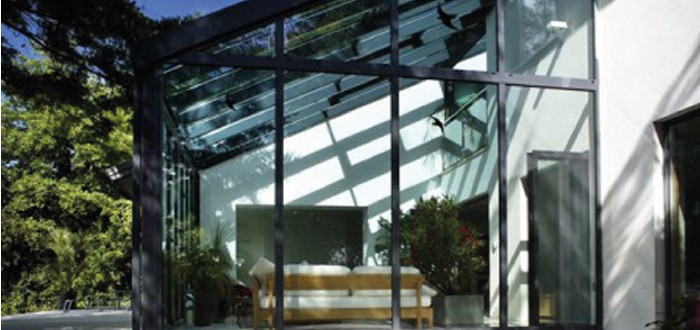If you’ve spent time on our website, it’s likely you’ll have come across a term that isn’t always well-known in the world of home improvements: curtain walling.
Let us take you through the ins and outs of curtain wall systems, how they are made, which applications are best suited to them and the practical benefits of curtain walling in operation.
A curtain wall is an outer covering of a building created to protect it from the weather. However, unlike more traditional walls, curtain walls are non-structural, meaning they can be made from significantly lighter materials.
Curtain wall systems can be custom-made to suit your unique project, although off-the-shelf proprietary solutions can also be purchased. Both horizontal and vertical curtain walling is available, both of which can work well for domestic and commercial installations.
Multiple glazing treatments are also available for horizontal and vertical curtain walling; including transparent, translucent and opaque glass – or varying degrees thereof. The real key here is to ensure that the curtain walling does not create a greenhouse effect in your home or work space, which is why solar control glazing is increasingly popular – absorbing as much of the sun’s rays as possible whilst allowing abundant levels of natural daylight into interiors.
How is curtain walling made?
As curtain walls are non-structural, they can be made of lightweight material, which greatly minimises overall construction costs. Generally, curtain walls are designed to be fitted within extruded aluminium members as its strength and stability meets all the necessary demands to support large glass areas, encouraging natural light to flood into a property.
Initially, curtain walls were often made using glass over a steel frame. However, in recent years they are usually created using an aluminium frame. These thinner aluminium frames are used to create dramatic, attractive facades that allow maximum levels of daylight into small or large multi-storey buildings. Some curtain wall systems also make use of other in-fills from materials such as stone veneer, metal panels or operable vents.
Regardless of which material used, curtain wall solutions are non-structural, which differs to many forms of traditional construction where all external walls are an integral aspect of a building’s primary structure.
Popular examples of curtain walling
Curtain walls can be seen in a wide range of world-renowned buildings. To name just two: London’s Gherkin and the façade of New York’s Empire State Building. Glazed facades have certainly encouraged greater architectural flair with contemporary buildings that dominate the skyline of major cities.

What are the benefits of curtain walling?
Able to support their own weight
These bespoke glass living areas simply support their own weight and any loads imposed upon them, such as seismic or wind-related.
Design flexibility
Influenced by the lightness of the material, curtain walls can be tailored to a range of glazing and panel options, textures and finishes. It’s this that makes the technique so effective for iconic building such as The Gherkin.
Unlimited natural light and maximised external views
The lightweight material of a curtain wall system means that frames can be smaller, enabling a flood of natural light into even modest buildings; all this whilst enjoying the beautiful panoramic external views of gardens and landscape.
Excellent thermal performance
In comparison with other building components, aluminium has a high heat transfer coefficient, which makes it a very good conductor of heat. However, this can translate into considerable heat loss through aluminium curtain wall mullions if there are no thermal breaks fitted to compensate.
Put simply, thermal breaks work as a barrier between exterior and interior metal and are often made of polyvinyl chloride (PVC).
The thermal breaks can greatly minimise the thermal conductivity of a curtain wall. Take our Swiss-engineered Supersun100 system for instance; which is designed to exceed guidelines on thermal efficiency for aluminium glazing with an extensively insulated cavity allowing us to deliver an uncompromised vision of light and spaciousness for our customers time and again.
State-of-the-art aesthetics
Our curtain walling includes a host of aesthetic benefits as well as industry-leading technical performance. Our toughened, laminated double glazed Low-E Supertherm80 units are available with self-cleaning and solar control glass as optional extras; while the frames are available in a host of colours which can be customised to show different colours inside and out based on the individual technical requirements of our customers.
Can I enjoy curtain walling in my own home?
Yes, you can. At Urban & Grey, we provide a full installation service for fixed curtain walls, giving you the opportunity to enjoy the same world-class architectural glazing in your own home.
Our Supersun100 glass curtain walling is compatible with many of our other aluminium windows, rooflights and folding doors, providing a comprehensive glazing solution with almost limitless design freedom.
If you’re a property owner in London or the Home Counties and desire an uncompromised vision of light and spaciousness in your home or workplace, please don’t hesitate to discuss your options further with our friendly, experienced team today on 020 8003 2958.

